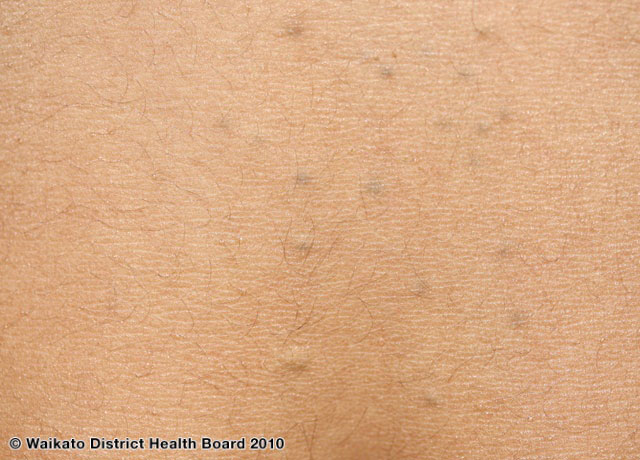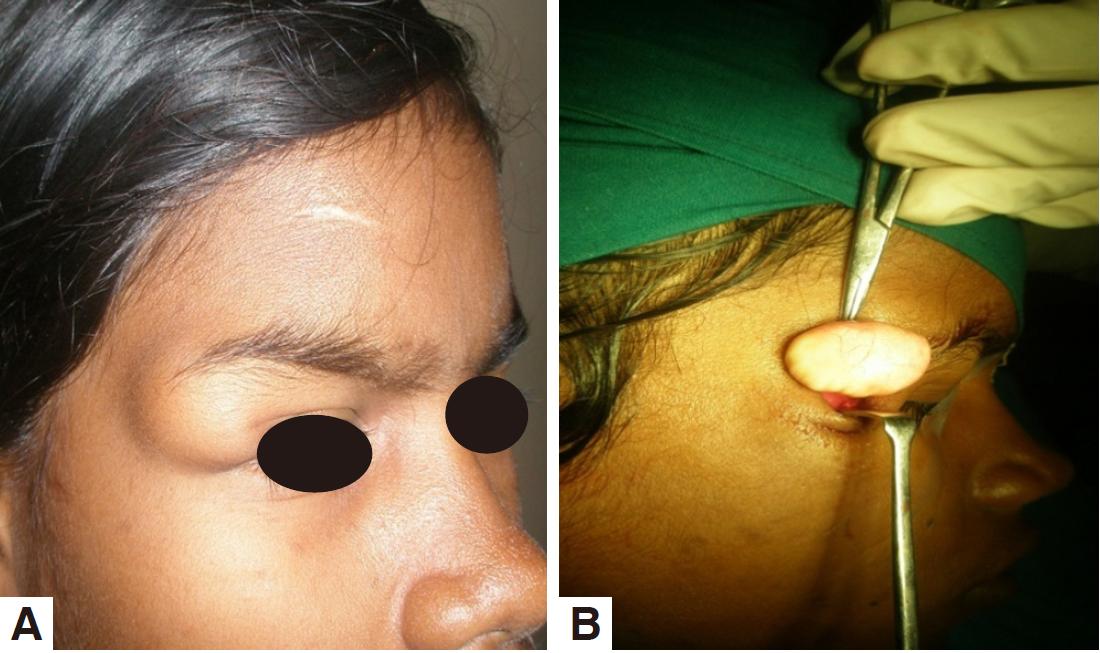What is a cyst?
A cyst is an abnormal growth–usually benign (noncancerous)–that contains a liquid or semi-liquid material enclosed in a membrane.
Skin cysts appear as dome-shaped lumps few millimeters to several centimeters in size. They may be firm or fluctuant and movable.
Non-inflamed cysts are painless and covered by a normal, white or yellow skin. Some cysts may ooze a white or yellow greasy material.
Inflamed cysts can be covered by red skin and can be tender or painful. They may ooze pus and they may burst.
A cyst can slowly grow or heal on its own.
Skin cysts are more common in adults than in children [1]. Rarely, they can be present from birth; in most cases, they develop after puberty.
How do skin cysts form?
The exact cause of a skin cyst is often not known. Common causes and risk factors include:
- An injury
- A surgery
- High testosterone levels
- Use of androgenic anabolic steroids
- A genetic predisposition
A cyst in the skin develops when certain cells of the skin or the skin glands excrete the material, which can not be cleared from any reason. An example is a small injury that blocks the opening of the sebaceous gland.
Types of Skin Cysts
1. Chalazion
 Chalazion is a cyst that develops from a blocked sebaceous gland in the eyelid. It appears as painless red swelling.
Chalazion is a cyst that develops from a blocked sebaceous gland in the eyelid. It appears as painless red swelling.
Picture 1. Multiple chalazions in both eyelids (source: University of Iowa, Health Care, CC license)
2. Dermoid Cyst
Dermoid cysts are developmental abnormalities that appear mainly in small children as soft lumps around the eyes, on the neck or scalp [4]. They can contain skin cells, hair follicles and sweat glands [4].
Picture 2. A. A dermoid cyst near the right eye
B. Surgical removal of the cyst
(source: Plastic and Aesthetic Research, CC license)
3. Epidermoid Cyst
 Epidermoid cyst (formerly wrongly categorized as a type of sebaceous cyst) originates from the epidermal cells of the upper part of the hair follicle.
Epidermoid cyst (formerly wrongly categorized as a type of sebaceous cyst) originates from the epidermal cells of the upper part of the hair follicle.
Picture 3. An epidermoid cyst (source: Samuel Freire da Silva, MD, Atlasdermatologico.com.br)
4. Eruptive Vellus Hair Cyst
 Eruptive vellus hair cysts arise from the blocked hair follicles [2]. They appear as small brown papules, mainly in the middle of the chest in children or teenagers and can spontaneously disappear.
Eruptive vellus hair cysts arise from the blocked hair follicles [2]. They appear as small brown papules, mainly in the middle of the chest in children or teenagers and can spontaneously disappear.
Picture 4. An eruptive vellus hair cyst (source: DermNetNZ, CC license)
5. Pilar (Trichilemmal) Cyst
 Pilar cyst (formerly wrongly categorized as a type of sebaceous cyst) originates from the outer sheath of the hair root. They appear mainly on the scalp and are often multiple.
Pilar cyst (formerly wrongly categorized as a type of sebaceous cyst) originates from the outer sheath of the hair root. They appear mainly on the scalp and are often multiple.
Picture 5. Two pilar cysts on the scalp (source: DermNetNZ, CC license )
6. Pilonidal Cyst
 Pilonidal cysts usually result from bacterial folliculitis and ingrown hair in the tailbone area.
Pilonidal cysts usually result from bacterial folliculitis and ingrown hair in the tailbone area.
Picture 6. A pilonidal cyst over the tailbone (source: Samuel Freire da Silva, MD, Atlasdermatologico.com.br)
7. Steatocystom or True Sebaceous Cyst
 Steatocystoma simplex (a single cyst) or multiplex (multiple cysts) is a hereditary disorder in which, at puberty, some hair follicles and sebaceous glands develop into red bumps on the chest, abdomen, arms, armpits or face [6].
Steatocystoma simplex (a single cyst) or multiplex (multiple cysts) is a hereditary disorder in which, at puberty, some hair follicles and sebaceous glands develop into red bumps on the chest, abdomen, arms, armpits or face [6].
Picture 7. Multiple steatocystomas on the upper arm (source: DermNetNZ, CC license)
Diagnosis
A doctor (dermatologist) can usually recognize a cyst by an inspection. After a cyst removal, a pathologist usually checks the removed tissue and tells, what exact type of cyst it is and is it cancerous.
Differential Diagnosis
Examples of bumps and lumps that can look similar to skin cysts [5]:
- Acne
- Boil or furuncle (see bumps at the back of the neck)
- Branchial cleft cyst (on the side of the neck)
- Digital mucous cyst (on the fingers)
- Ganglion cyst (near the wrist or other joints)
- Ingrown hair
- Lipoma
- Neurofibroma
- Perianal abscess (between the buttocks; in Crohn’s disease)
- Parotid gland tumor (below the ear)
- Rheumatoid nodules (on the hands in rheumatoid arthritis)
- Skin cancer (a flat red bump with an ulcer)
- Swollen lymph node (in the neck, armpits or groin)
- Syringomas (small benign sweat gland tumors, in adolescent Asians, around the eyes, belly button or in the armpits) [7]
- Thyroglossal duct cyst (in front of the neck)
- Xanthoma (accumulation of fat near the elbows, knees, heels or buttocks)
What is a pseudocyst?
A pseudocyst, unlike a true cyst, does not contain epithelial cells in the membrane but just the fibrous tissue.
An example of a skin pseudocyst is nodulocystic acne, which can develop as a complication of acne vulgaris.
Cyst Removal
A doctor can remove a cyst by a small surgical procedure, which includes local anesthesia, a cut in the skin and removal of the cyst’s content and membrane.
- References
- Oakley A, Cutaneous cysts and pseudocysts DermNetNZ
- Turnbull N, Eruptive vellus hair cysts DermNetNZ
- Ngan V, Dermoid cysts DermNetNZ
- Sabhalok SS et al, 2016, Epidermoid and dermoid cysts of the head and neck region Plastic and Aesthetic Research
- Oakley A, Nodulocystic acne DermNetNZ
- Oakley A, Steatocystoma multiplex DermNetNZ
- Oakley A, Syringoma DermNetNZ


